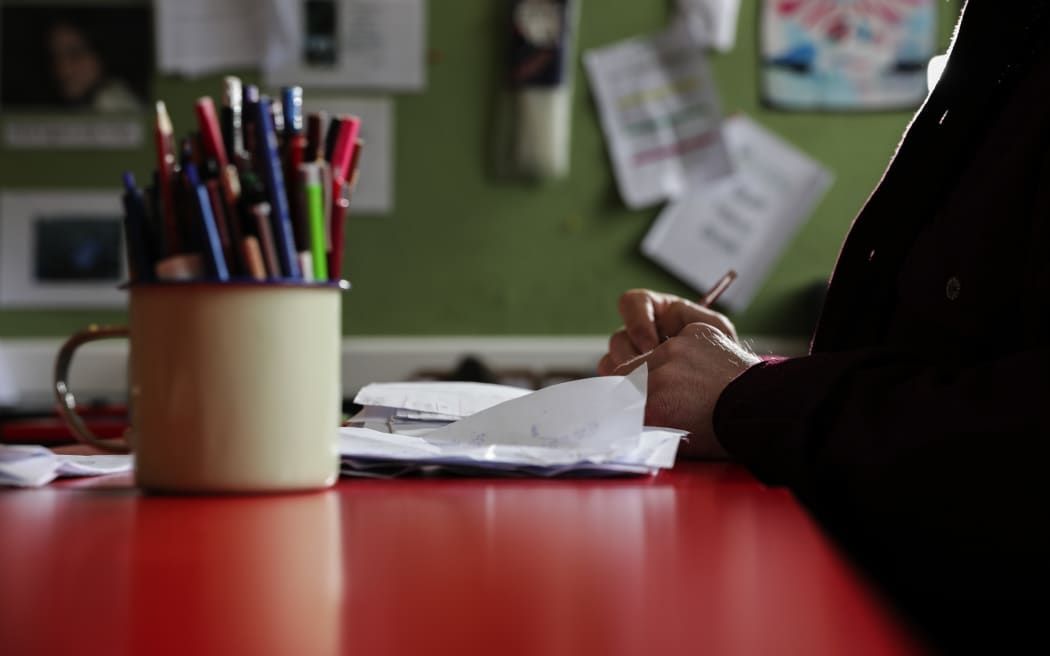A scathing new ERO report revealed students enrolled in alternative education programmes are far more likely than other kids to end up living on the benefit or facing police proceedings as adults. What's more, they aren't coming out with any academic qualifications. If this is what's sold as the alternative to school, is it really an alternative at all?

Alternative education programmes aren't funded enough to pay registered teachers, an ERO report has found. Photo: RNZ / Richard Tindiller
If they are either kicked out, or unable to cope with school, when a young student has nowhere else to go, they can still go to alternative education.
And about 2000 young people each year, about one percent of all learners, do.
"We tend to have a lot of young people who struggle with their anger, that might have ADHD or learning difficulties, that are coming from backgrounds which are quite unstable, a history of truancy from school, being moved from between different whānau regularly," says Christina Galley, the head teacher at ZEAL, a community youth centre and alternative education provider based in Taranaki.
ZEAL offers 10 places for young people aged 14 to 16 who have left mainstream education. Supported by Galley and a team of social workers, they're trying to get the credits they need to pass NCEA and achieve literacy and numeracy. They stay for anywhere between three weeks to three years.
And while there are some success stories, it's not easy.
"They arrive disengaged from education. A lot of them do not even believe in their own ability to learn," Galley says.
The Education Review Office (ERO) last week released a scathing report into the state of alternative education.
Less than one in 10 students go on to achieve NCEA Level 2, and when they leave the education system, the outlook is even worse, with over a third going on to face police proceedings and 70 percent ending up on the benefit.
But the biggest problem ERO found with alternative education: insufficient funding.
The government allocates $16,536 for every student in alternative education, under half what a small, mainstream high school receives per student (they get $36,760).
Only one in five staff at alternative education programmes are registered teachers like Galley, largely due to their inability to pay teacher salaries, and often resources and facilities are substandard.
Education researcher and consultant Judy Bruce says the sorry state of alternative education isn't new – it goes all the way back to the programme's origins in the 1980s and '90s.
"It was a very grassroots, ad-hoc movement that emerged slowly over the '90s. The ministry picked it up and started to partially fund it from about 2000," she says.
Programmes are often run by social workers, bringing together the "two worlds" of youth development and education to foster the student's wellbeing. But there's a high burn-out rate for providers, with most programmes only lasting around two years.
"It's always been a state-philanthropic partnership, which in some ways has been a strength of the sector, but in many ways it's been a struggle. It's never been funded in the way that it should be."
Bruce says keeping at-risk students 'out of sight, out of mind' at alternative education meant the programmes never got the attention or funding they deserved.
"There's been talk of it being a dumping ground. It's a place where young people go and are excluded, in a way," she says.
Galley used to teach in mainstream schools, and said she took a huge pay cut when she moved into alternative education, as well as a big step-up in responsibility.
"Here I teach all of the subjects, as well as doing the role of a deputy principal, too - having to make those calls about removing students from the programme, calls that have massive impacts on students' lives."
She says one of the problems with the statistics in the ERO report is it doesn't capture the growth that many students experience.
A student who came in with very low literacy and numeracy didn't get NCEA Level 1, but still got 62 credits, including literacy and numeracy, an achievement which Galley says is still remarkable.
While the job is hard, she says the best part is when young people who have left the programme come back and tell her about their successes: getting a job, or finishing a course.
"They walk in with this pride, and when something great happens in their life, the first person they want to tell is the staff who believed in them."
Hear more about this issue in the full podcast episode.
Check out how to listen to and follow The Detail here.
You can also stay up-to-date by liking us on Facebook or following us on Twitter.

Photo:


